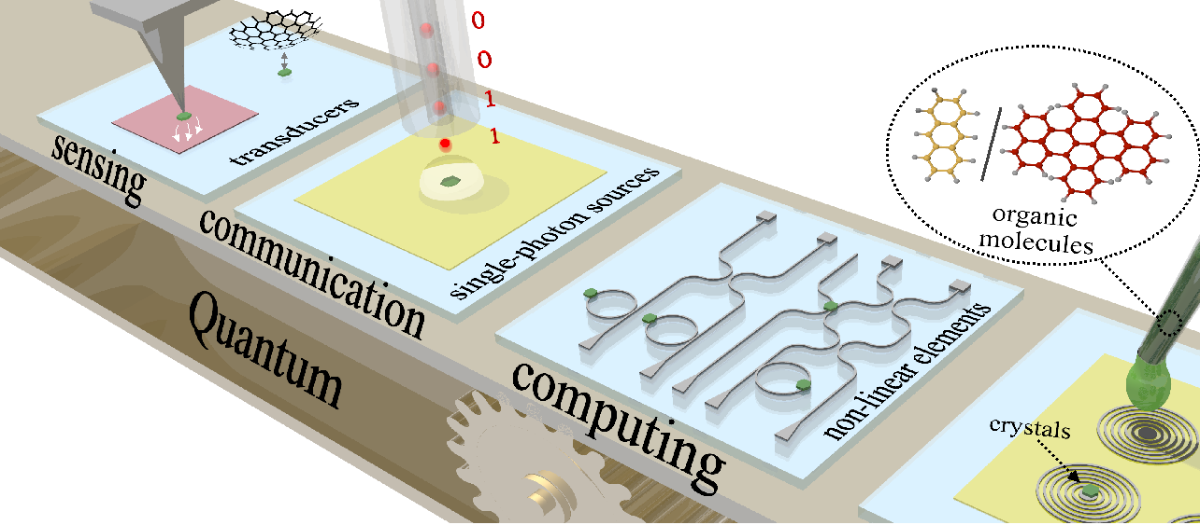
Quantum mechanics has puzzled physicists and philosophers around the world for over a century. Quantum teleportation or Einstein’s famous “spooky action at a distance” are just two examples of counterintuitive effects predicted by this theory that has revolutionized the laws of physics. In the last few decades it has become a well-established framework describing very different phenomena, from nuclear reactions at high energies to light-matter interaction at the nanometer scale. Beyond fundamental physics, today it is hailed as a fertile ground for breakthrough technologies in information science and high precision measurements, evidenced by the huge investments being made across the globe in this area. But what are the ideal material platforms providing such technologies? This is still an open question for both private and public investors, while also for researchers and engineers. We know organic materials were naturally selected as the basis for life on earth, and that they play an important role in many modern technologies such as flat panel displays and solar cells. In this review article published in Nature Materials (https://dx.doi.org/10.1038/s41563-021-00987-4), we discuss the prominent impact of organic molecules in quantum technologies as a result of over 20 years of active investigation. This work, authored by 16 scientists from 7 different countries, analyses the close synergy between molecules and photons – particles of light. The recent advances in controlling this interaction at the level of single quanta will be the key transduction mechanism for optically reading the charge of a single electron or a single quantum of mechanical vibration. Light generated by single organic molecules can carry intrinsically secure information, one photon at a time, propagating unperturbed over long distances. Considering the extreme versatility and scalability of organic synthesis, which can provide, at low costs, a wide palette of properties, a new flexible way of building hybrid quantum devices is possible. The authors envision small hybrid optical networks on microchips that carry light instead of electricity, where photons and molecules together can perform certain tasks that are computationally hard for classical machines. Possible examples include simulations of new catalysts for carbon capture to fight climate change and of new medicines to aid global healthcare. An exciting path of harnessing organic molecules in quantum technologies lies ahead, building on the work discussed in this article while most certainly involving entirely new discoveries along the way.
C. Toninelli, I. Gerhardt, A. S. Clark, A. Reserbat-Plantey, S. Götzinger, Z. Ristanović, M. Colautti, P. Lombardi, K. D. Major, I. Deperasińska, W. H. Pernice, F. H. L. Koppens, B. Kozankiewicz, A. Gourdon, V. Sandoghdar & M. Orrit
